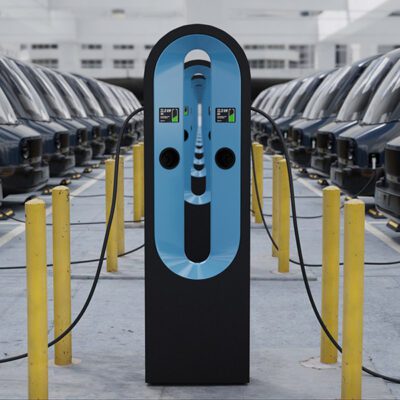As you roll up your sleeves to tackle your company’s carbon emissions, buying offsets is likely to be one of many tools in your strategy. But what is offsetting exactly? Do offsets work? And why do experts disagree about them? This guide explains how to buy carbon offsets that are credible and have a positive impact.
Carbon Offsets Overview
Carbon credits or offsets are like other forms of credit — they allow you to stretch beyond your current ability to “pay.” Say your company simply can’t avoid a certain amount of air travel. You can offset (pay for) the planetary cost of those flights by purchasing credits to fund a reforestation effort, for example, or a sustainable development project serving a vulnerable community. Carbon offset programs usually involve funding an activity that removes carbon dioxide and other greenhouse gasses from the atmosphere or preventing inevitable pollution from occurring.
Offsets are a well-studied emissions reduction solution for scopes 1 (your organization’s direct emissions) and 3 (indirect emissions from the supply/value chain that makes it possible for your organization to operate). Offsets are used primarily to address emissions that can’t be directly reduced by other solutions, and they should be viewed as a “band-aid” solution until better long-term emissions reduction technologies become available.

A carbon offsets example: funding replanting of a cleared pine forest and collecting carbon credits.
Carbon Offsets Controversy
Carbon offsets are in no way a substitute for immediately and aggressively cutting emissions. As any credit card user knows, at some point the spending has to stop. Critics worry offsetting gives “spenders” (polluters) an inexpensive pass to continue emitting GHGs (greenhouse gases) without changing the offending behavior. Companies may also over-promote their use of offsets, making themselves seem “greener” than they are.
However, as the saying goes, perfect is the enemy of good, and our climate needs every ounce of help we can give it. While offsetting has its flaws, supporters (including the United Nations’ Intergovernmental Panel on Climate Change, or IPCC) feel it’s still an important decarbonization tool when used conscientiously, especially considering the alternative, which is to do nothing.
Any group wishing to make significant change must begin by aggressively reducing its direct emissions in every way possible. Only then should you look into purchasing offsets. Consider them the clean-up crew that takes care of the leftover emissions we don’t yet have the technology to address.
A Decarbonization Order of Operations
|
How to Evaluate and Choose Offsets
In what has been largely a wild west of a carbon market, how can you know if offsets you buy do any good? Fortunately, more reliable protocols and verification organizations are emerging, and any mitigation advisor should be fully in tune with what those are — and whether the offsets you’re considering hit the mark. Start with understanding what are “must-haves” for your organization’s values and priorities, and what are “must-haves” for broader market credibility.
Internal “Must-haves”
The first step is to align on your organization’s priorities. You may be interested in offsets that optimize geographical similarity, emissions type similarity, or that have additional environmental or communications benefits. There will be trade-offs between different offset types, so it’s crucial to understand the benefits and pitfalls of each option. Once you’ve decided on how your organization will evaluate these options, including what factors are a “must-have” vs. “nice-to-have,” you can better choose offsets that support your overall strategy.
External “Must-haves”
Evaluation criteria will vary once you move beyond your internal priorities, but experts agree offsets should be demonstrably real, additional, permanent, and verifiable (these criteria may be known by different terms across the industry). A “gold standard” carbon offset project will meets all these criteria.
- Real: An offset must measurably reduce emissions, equivalent to the offsets purchased (for example, an offset purchased to protect a forest that was already protected would not be considered a real offset).
- Additional: The offset purchase must enable reduction by financing projects that wouldn’t have been possible otherwise.
- Verifiable: The methodology of the supported project must be reviewed and verified by an outside agency (such as Verra).
- Permanent: The emissions reduction realized from an offset purchase must last forever.
After assessing evaluation criteria from both angles, it may be useful to create a table of those criteria that you can refer back to as you enter the offset market. Your table might look something like this:
| Category | Criteria | “Must Haves” | “Nice to Haves” |
| Economics | Cost per metric ton of carbon dioxide or equivalent | Competitive cost for project type and quality | |
| Sustainability | Carbon reduction claims | Additionality (confirmed by all verifiers) and permanent impact | “Like-for-like” impact: geographic proximity to company operations and/or similarity to company emissions being offset |
| Environmental Impact (non-CO2) | Additional benefits to local ecosystems (endangered species, biodiversity, etc.) | ||
| Community Impact | Additional impact to local community (job creation, local water/air quality improvement, etc.) | ||
| Risk | Verifiability | Verified by reputable third party (ACS, Verra, etc.) and verification documentation shows no red flags | |
| Counterparty experience and reputation | Counterparty size, years of experience, and industry relevance |
Coho can help you customize and execute an effective, comprehensive decarbonization plan, including helping you choose competitive carbon offsets tailored to your priorities. Learn how.
Coho uses offsets for our own sustainability goals. Here’s how.
At Coho, carbon offsets help us to address Scope 1 and 3 emissions that we can’t otherwise mitigate. A few defined steps help us to choose the right ones.
Revisit
Every few years, we revisit our evaluation criteria to identify our company’s priorities and “must-haves.” We review our most recent offset purchase type and take a good look at how they’ve stacked up to those criteria.
Research
We then collect as many different offset types as possible, using resources like Verra (the leading standards setter for climate action and sustainable development) and ACR (American Carbon Registry) to curate the best offset examples.
Compare and Select
After narrowing this list down by applying our must-have criteria, we compare our shortlist against secondary criteria to identify finalists. Finally, we interview our finalist projects and select our offset project—all in keeping with the priorities most critical to Coho.
In 2023, this process led Coho to purchase verified offsets from Tradewater. Its emissions destruction projects were unique and reduced emissions not addressed by any regulatory requirement or financial incentive (real and additional). The projects were here in the U.S. and offered confidence that the emissions were destroyed for good (permanence).



